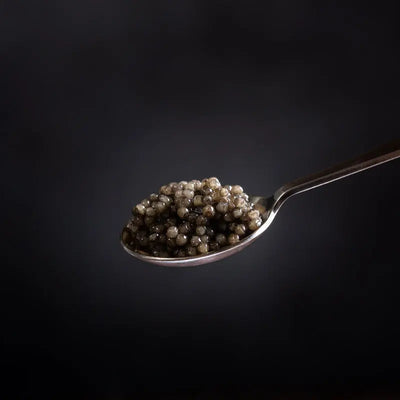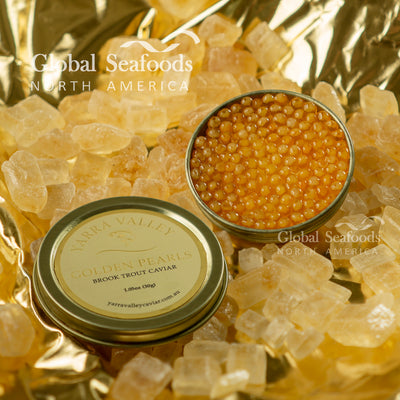+Shop Now
+Categories
- Abalone
- Ahi Tuna
- Alaskan King Crab Legs
- Alaskan Pollock
- Alaskan Sockeye Salmon
- Albacore Tuna
- Anchovy
- Anxiety Relief
- appetizer
- Atlantic Salmon
- Beluga Caviar
- Best Sushi
- black caviar
- black cod
- Blue crabs
- Bluefin Tuna
- Brain Function
- Branzino
- breakfast
- Calamari
- caviar
- Caviar Recipes
- Chef Knives
- Chilean Sea Bass
- Clams
- cocktail caviar
- Cod
- Coho Salmon Caviar
- collagen
- Cooking Methods
- crab
- Crab Balls
- Crab Cakes
- Crab claws
- crab meat
- Crab Recipes
- culinary tips
- decline-sturgeon
- Diver Scallops
- Dover Sole
- Dry Aged Fish
- Dungeness Crab
- Dungeness crab clusters
- Dungeness Crab Legs
- Exotic Shellfish Sampler
- Fish and Seafood
- fish oil
- Fish Sauce
- flat fish
- FLOUNDER FISH
- Focus
- Fresh Seafood Delivery
- Fresh Wild Alaskan Salmon
- Geoduck
- Gooseneck Barnacles
- Gourmet Seafood Platter
- haddock
- halibut
- Halibut Recipes
- hamachi
- Hamachi Recipe
- health
- healthy eating
- Ikura
- Japanese restaurants
- Jonah crab
- Jumbo Sea Scallops
- Kaluga Caviar
- kelp
- king crab
- King Crab Legs
- King Salmon
- kitchen
- Lingcod
- Live King Crab
- Live Lobsters for Sale
- Live Scallops
- Live seafood
- lobster
- Lobster Tail
- luxury food
- mahi mahi
- Marine Collagen
- Mollusk
- Monkfish
- Mussels
- New
- Nutrition
- octopus
- Opah
- Ora King Salmon
- Osetra Caviar
- Ossetra Sturgeon Caviar
- oysters
- Pacific Cod
- Pacific Hake
- Pacific Halibut
- Pacific Ocean
- Pacific Whiting
- Pacific Whiting Recipe
- Paddlefish Caviar
- Petite Oysters
- Petrale Sole
- Poke Tuna
- Pollock
- Pregnancy
- Premium Caviar Selection
- Recipe
- red caviar
- Red Crab
- rock fish
- Rockfish
- Rockfish Recipes
- sablefish
- Sablefish (Black Cod) Recipes
- salmon
- Salmon Caviar
- Salmon lox
- Salmon Poke
- Salmon Recipes
- salmon roe
- Sardines
- Sashimi
- Sashimi-Grade Tuna
- Scallop
- scallops
- Scallops Recipe
- Sea Urchi Recipe
- sea urchin
- Sea Urchin Sushi
- sea weed
- Seafood
- Seafood Dishes
- Seafood Market
- Seafood Recipe
- Seafood Restaurants
- sevruga caviar
- shellfish
- Shrimps & Prawns
- Silver Salmon
- Smoked
- Smoked Salmon
- Smoked Tuna
- Snail Caviar
- Snapper Recipe
- snow crab
- Sole & Flounder Recipes
- Squid
- Steelhead
- Sturgeon Caviar
- Sustainable Seafood Choices
- Swordfish
- Tilapia
- Tilapia Fish
- Tobiko
- Trout
- tuna
- Tuna Recipe
- weathervane scallops
- white fish
- White Sturgeon
- White Sturgeon Caviar
- Whiting Fish
- Wild Caught Shrimp
- Yellowfin Tuna
- Yellowtail snapper
Paddlefish Caviar - A Luxurious Gourmet Delight
January 03, 2025

The Allure of Paddlefish Caviar
Caviar is often considered the epitome of luxury dining, but it doesn’t always have to come with a hefty price tag. Paddlefish caviar, sometimes referred to as “American caviar,” provides a budget-friendly yet exquisite alternative to traditional sturgeon caviar. Sourced from the American paddlefish, this roe is known for its mild, earthy flavor and delicate texture.
This guide dives deep into the world of paddlefish caviar, exploring its origins, nutritional value, and best ways to enjoy it. Whether you're a caviar aficionado or a curious beginner, paddlefish roe is a gourmet delight worth savoring.
The Origins of Paddlefish Caviar
What Is Paddlefish?
The paddlefish (Polyodon spathula) is a freshwater fish native to rivers and lakes across the United States. Known for its unique paddle-shaped snout, this fish has become a sustainable source of caviar.
Sustainable and Eco-Friendly
Unlike sturgeon, whose populations have been threatened by overfishing, paddlefish is abundant and harvested sustainably. This makes paddlefish caviar a responsible choice for eco-conscious food lovers.
What Does Paddlefish Caviar Taste Like?
Paddlefish caviar has a subtle, earthy flavor with a slightly nutty undertone. The pearls are small and grayish-black, resembling classic sturgeon roe in appearance. Its mild taste makes it versatile, pairing well with various dishes and beverages.
Chef's Quote: “Paddlefish caviar is proof that luxury doesn’t have to break the bank. Its delicate flavor is perfect for beginners and seasoned caviar lovers alike,” says Chef Thomas Keller of The French Laundry.
Health Benefits of Paddlefish Caviar
Rich in Nutrients
- Omega-3 Fatty Acids: Essential for heart and brain health.
- Vitamin B12: Supports energy production and red blood cell formation.
- Selenium and Iron: Boosts immunity and overall well-being.
Low in Calories
A tablespoon of paddlefish caviar contains just 40 calories, making it a guilt-free indulgence.
How to Serve Paddlefish Caviar
Classic Pairings
- Blini with Crème Fraîche: A timeless way to enjoy caviar.
- Hard-Boiled Eggs: The creamy yolk complements the caviar’s brininess.
- Toast Points with Butter: A simple yet elegant pairing.
Beverage Pairings
- Dry Champagne: Balances the salty richness of the caviar.
- Vodka: Enhances the clean, earthy flavors of the roe.
- Crisp White Wine: A versatile option for various dishes.
How to Buy the Best Paddlefish Caviar
For the highest quality paddlefish caviar, shop at reputable sources like Global Seafoods. Look for:
- Freshness: Ensure it’s packaged and stored properly.
- Certifications: Choose sustainably harvested options.
- Customer Reviews: Trustworthy feedback guarantees a great product.
Explore these premium options:
Tips for Storing and Handling Paddlefish Caviar
- Refrigeration: Keep caviar between 28°F and 32°F.
- Storage: Store unopened tins on ice and consume within 4–6 weeks.
- Serving Temperature: Always serve chilled to preserve flavor and texture.
FAQs About Paddlefish Caviar
Q: Is paddlefish caviar as good as sturgeon caviar?
A: While it has a different flavor profile, paddlefish caviar offers a similar luxurious experience at a more affordable price.
Q: How much caviar should I serve per person?
A: For appetizers, 1 ounce per person is sufficient.
Q: Can I freeze paddlefish caviar?
A: Freezing is not recommended as it can alter the texture of the roe.
Where to Buy Paddlefish Caviar
Ready to indulge in the finest paddlefish caviar? Shop at Global Seafoods for top-quality options:
Conclusion: A Gourmet Experience Without Compromise
Paddlefish caviar is a delightful way to experience the elegance of caviar without the high price tag. Its sustainable sourcing, rich flavor, and versatility make it a must-try for any gourmet enthusiast.
Elevate your dining experience with paddlefish caviar, whether paired with champagne, served on blinis, or enjoyed straight from the tin. For more insights and recipes, visit our YouTube channel.
Call to Action:
Dive into the world of caviar today and savor the gourmet experience!
Related Products
Share:
Also in News

How to Make Sea Bream Sushi With Dry-Aged Tuna & Crab Roll — Step-by-Step With Chef Joshua
December 07, 2025
A complete guide to making Sea Bream sushi at home, including filleting, curing, slicing, and building a Dry-Aged Tuna & Crab sushi roll. Chef Joshua shares professional tips for restaurant-quality results.

Boiled Crab for Game Night: Everything You Need for a Perfect Seafood Party
June 27, 2025
Take your game night to the next level with a Boiled crab party. Learn the best recipes, cooking tips, and hosting hacks for a memorable seafood feast.

Boiled Crab for Date Night: A Romantic Guide to the Perfect Seafood Feast
June 27, 2025
Make your next date night unforgettable with a romantic Boiled crab experience. This guide covers everything you need to know, from ambiance to the best crab varieties.
+Shop Now
+Categories
- Abalone
- Ahi Tuna
- Alaskan King Crab Legs
- Alaskan Pollock
- Alaskan Sockeye Salmon
- Albacore Tuna
- Anchovy
- Anxiety Relief
- appetizer
- Atlantic Salmon
- Beluga Caviar
- Best Sushi
- black caviar
- black cod
- Blue crabs
- Bluefin Tuna
- Brain Function
- Branzino
- breakfast
- Calamari
- caviar
- Caviar Recipes
- Chef Knives
- Chilean Sea Bass
- Clams
- cocktail caviar
- Cod
- Coho Salmon Caviar
- collagen
- Cooking Methods
- crab
- Crab Balls
- Crab Cakes
- Crab claws
- crab meat
- Crab Recipes
- culinary tips
- decline-sturgeon
- Diver Scallops
- Dover Sole
- Dry Aged Fish
- Dungeness Crab
- Dungeness crab clusters
- Dungeness Crab Legs
- Exotic Shellfish Sampler
- Fish and Seafood
- fish oil
- Fish Sauce
- flat fish
- FLOUNDER FISH
- Focus
- Fresh Seafood Delivery
- Fresh Wild Alaskan Salmon
- Geoduck
- Gooseneck Barnacles
- Gourmet Seafood Platter
- haddock
- halibut
- Halibut Recipes
- hamachi
- Hamachi Recipe
- health
- healthy eating
- Ikura
- Japanese restaurants
- Jonah crab
- Jumbo Sea Scallops
- Kaluga Caviar
- kelp
- king crab
- King Crab Legs
- King Salmon
- kitchen
- Lingcod
- Live King Crab
- Live Lobsters for Sale
- Live Scallops
- Live seafood
- lobster
- Lobster Tail
- luxury food
- mahi mahi
- Marine Collagen
- Mollusk
- Monkfish
- Mussels
- New
- Nutrition
- octopus
- Opah
- Ora King Salmon
- Osetra Caviar
- Ossetra Sturgeon Caviar
- oysters
- Pacific Cod
- Pacific Hake
- Pacific Halibut
- Pacific Ocean
- Pacific Whiting
- Pacific Whiting Recipe
- Paddlefish Caviar
- Petite Oysters
- Petrale Sole
- Poke Tuna
- Pollock
- Pregnancy
- Premium Caviar Selection
- Recipe
- red caviar
- Red Crab
- rock fish
- Rockfish
- Rockfish Recipes
- sablefish
- Sablefish (Black Cod) Recipes
- salmon
- Salmon Caviar
- Salmon lox
- Salmon Poke
- Salmon Recipes
- salmon roe
- Sardines
- Sashimi
- Sashimi-Grade Tuna
- Scallop
- scallops
- Scallops Recipe
- Sea Urchi Recipe
- sea urchin
- Sea Urchin Sushi
- sea weed
- Seafood
- Seafood Dishes
- Seafood Market
- Seafood Recipe
- Seafood Restaurants
- sevruga caviar
- shellfish
- Shrimps & Prawns
- Silver Salmon
- Smoked
- Smoked Salmon
- Smoked Tuna
- Snail Caviar
- Snapper Recipe
- snow crab
- Sole & Flounder Recipes
- Squid
- Steelhead
- Sturgeon Caviar
- Sustainable Seafood Choices
- Swordfish
- Tilapia
- Tilapia Fish
- Tobiko
- Trout
- tuna
- Tuna Recipe
- weathervane scallops
- white fish
- White Sturgeon
- White Sturgeon Caviar
- Whiting Fish
- Wild Caught Shrimp
- Yellowfin Tuna
- Yellowtail snapper
Shop Now
Main
News & Updates
Sign up to get the latest on sales, new releases and more…
© 2025 Global Seafoods North America.










